Setting up a home gym can be a game-changer for those who want to exercise conveniently without the need for a traditional gym membership. Creating the best home gym involves thinking about space, budget, and the necessary equipment to meet your fitness goals. It doesn’t matter if you have a large basement or a small apartment; there are effective solutions to fit any space and budget.
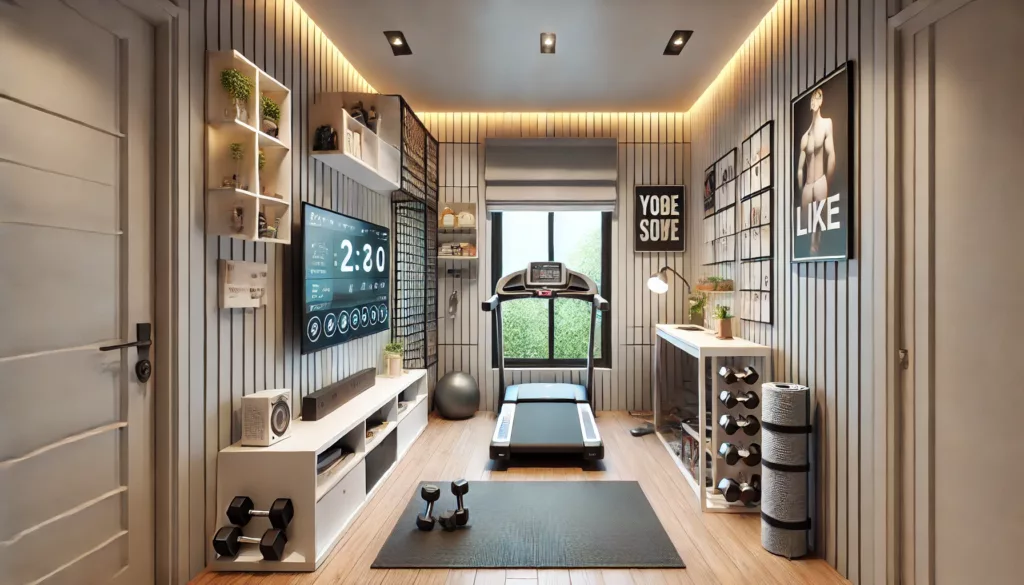
A good home gym setup includes essential equipment like a barbell, weights, and a bench, complemented by versatile tools like resistance bands and a jump rope. For those who want to go a step further, advanced tools like cable machines and smart gym systems can enhance the workout experience. The key is to tailor the gym to personal fitness needs, ensuring it is both functional and motivating.
Choosing durable and stable equipment is critical for safety and long-term use. To make the most out of your setup, consider integrating innovative fitness technology, which can provide personalized workouts and track progress. By focusing on quality and versatility, anyone can build an effective, customized home gym that fits their specific training goals and budget.
Key Takeaways
- Tailor the home gym to fit personal fitness needs and available space.
- Combine essential and advanced equipment for a versatile setup.
- Focus on durability, stability, and innovative technology to enhance workouts.
Determining Space and Size Requirements
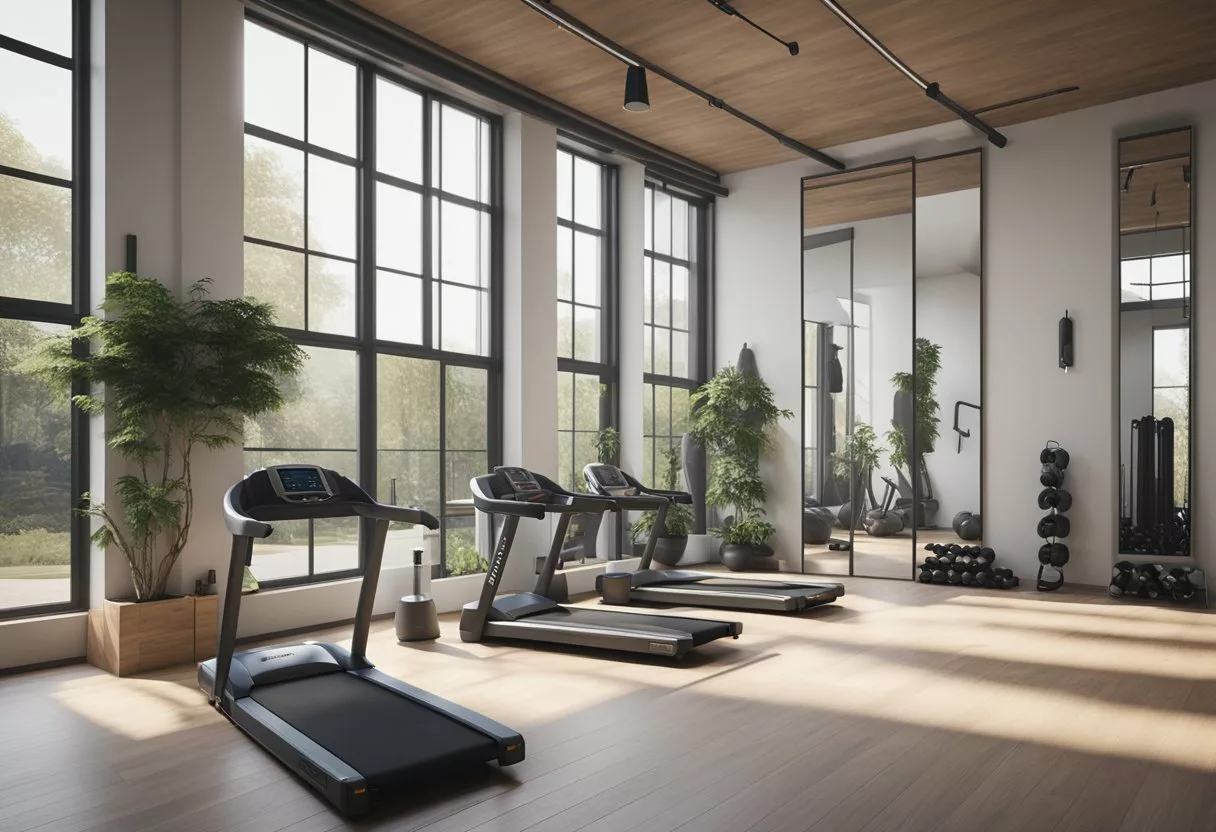
Setting up a home gym requires careful planning of available space and optimizing the dimensions based on the equipment to be used. This ensures a functional setup whether in a garage or basement gym.
Assessing Available Space
First, measure the area where the home gym will be set up. Common locations include garages, basements, or spare rooms. Take note of the room’s dimensions to determine what equipment can fit. For instance, a reasonably large multi-station gym needs about 50-200 square feet.
List out spaces for essential gym equipment such as bench, barbell, and dumbbells. Ensure there’s enough clearance around each piece for safe usage. Utilize vertical space with wall-mounted racks and storage solutions.
Optimizing for Compact Setups
For smaller spaces, selecting compact and multi-functional equipment is key. Items like foldable benches, adjustable dumbbells, and resistance bands save space. A simple setup might include a bench (10 sq ft), adjustable dumbbells (4 sq ft), and a treadmill (30 sq ft).
Use creative storage solutions to keep equipment organized. Consider placing a lifting platform under a bed or tucking away weights in storage racks. Prioritize items that have multiple uses.
Comparing Gym and Home Gym Dimensions
A commercial gym usually spans thousands of square feet, but a compact home gym can effectively fit in much smaller areas. Here are some general dimensions:
- Bench: 16-20 sq ft
- Storage racks for free weights: 6-10 sq ft
- Lifting platform: 32-64 sq ft
A combination of carefully chosen equipment can mimic a commercial gym on a smaller scale without overcrowding the space. It’s crucial to balance between utility and the physical footprint of each piece.
Essential Home Gym Equipment
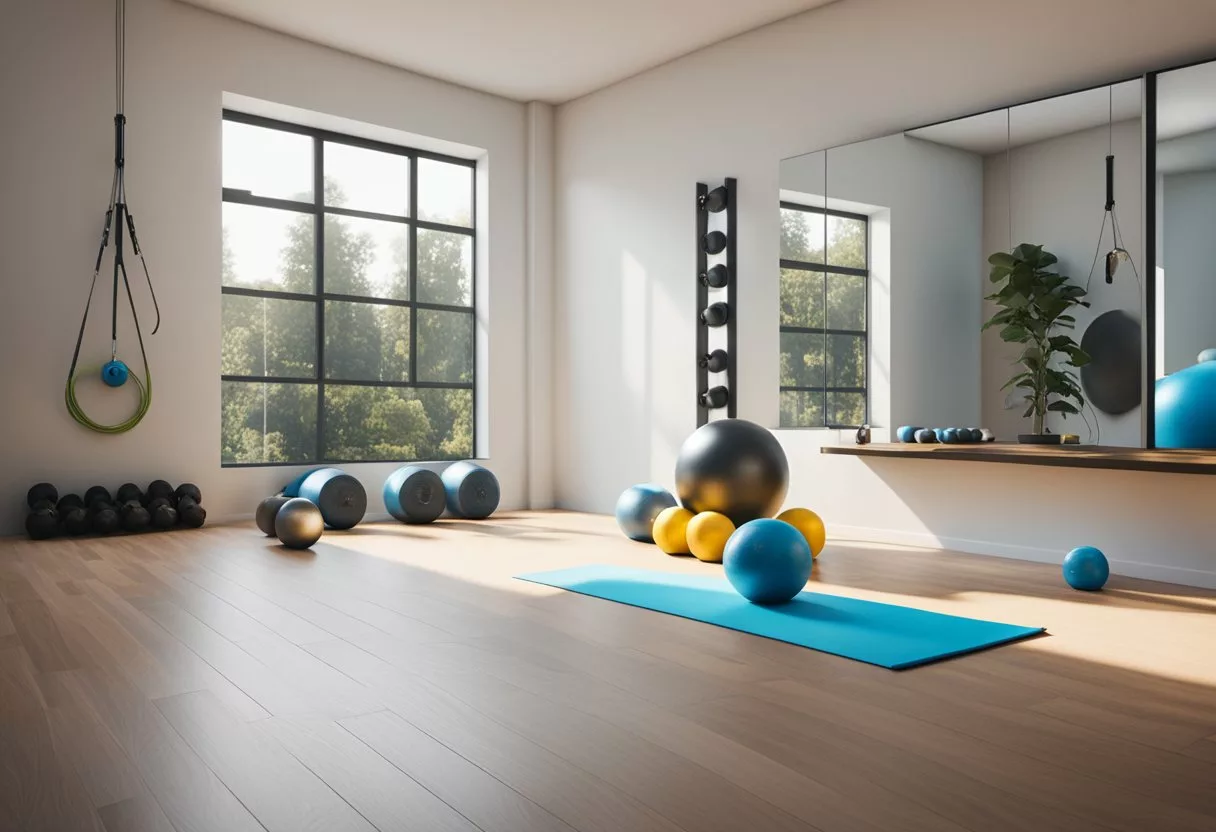
Creating a home gym requires careful selection of key equipment to ensure safe and effective workouts. Focus on investing in a sturdy rack, quality barbells and plates, and a reliable bench to maximize your fitness space.
Selecting a Reliable Rack
A power rack or squat rack is central to a home gym. It supports heavy lifting and provides safety features like catch bars. Look for racks made from heavy-duty steel and with solid construction.
Key features to consider:
- Load capacity: Ensure it can handle heavy weights.
- Adjustable: Offers versatility for different exercises.
- Safety pins or straps: Essential for solo workouts.
The Titan Fitness T-3 Series Power Rack is a popular choice due to its robust design and affordability. It fits well in many home setups and provides excellent support for various exercises.
Choosing Quality Barbells and Plates
Investing in quality barbells and plates is essential for effective strength training. Barbells should have good knurling for grip and be made from durable materials like stainless steel.
Considerations for barbells:
- Weight capacity: Should match or exceed your lifting goals.
- Knurling: Ensures good grip.
- Durability: Stainless steel is preferred for long-term use.
Weight plates should fit your barbell and be easy to handle. Rubber-coated plates protect floors and offer more durability. The Rogue Fitness Ohio Bar and REP Fitness Old School Iron Plates are highly recommended for their quality and performance.
The Importance of a Sturdy Bench
A weight bench is vital for exercises like bench presses and dumbbell workouts. It should be stable, comfortable, and adjustable.
Features to look for:
- Stability: Must not wobble or tip over.
- Adjustability: Allows for different inclines and declines.
- Comfort: Adequate padding for support.
The REP Fitness FB-3000 is a top pick according to Garage Gym Reviews. It offers a firm, stable surface and adjusts easily for various exercises, making it a valuable addition to any home gym.
Maximizing Versatility and Performance
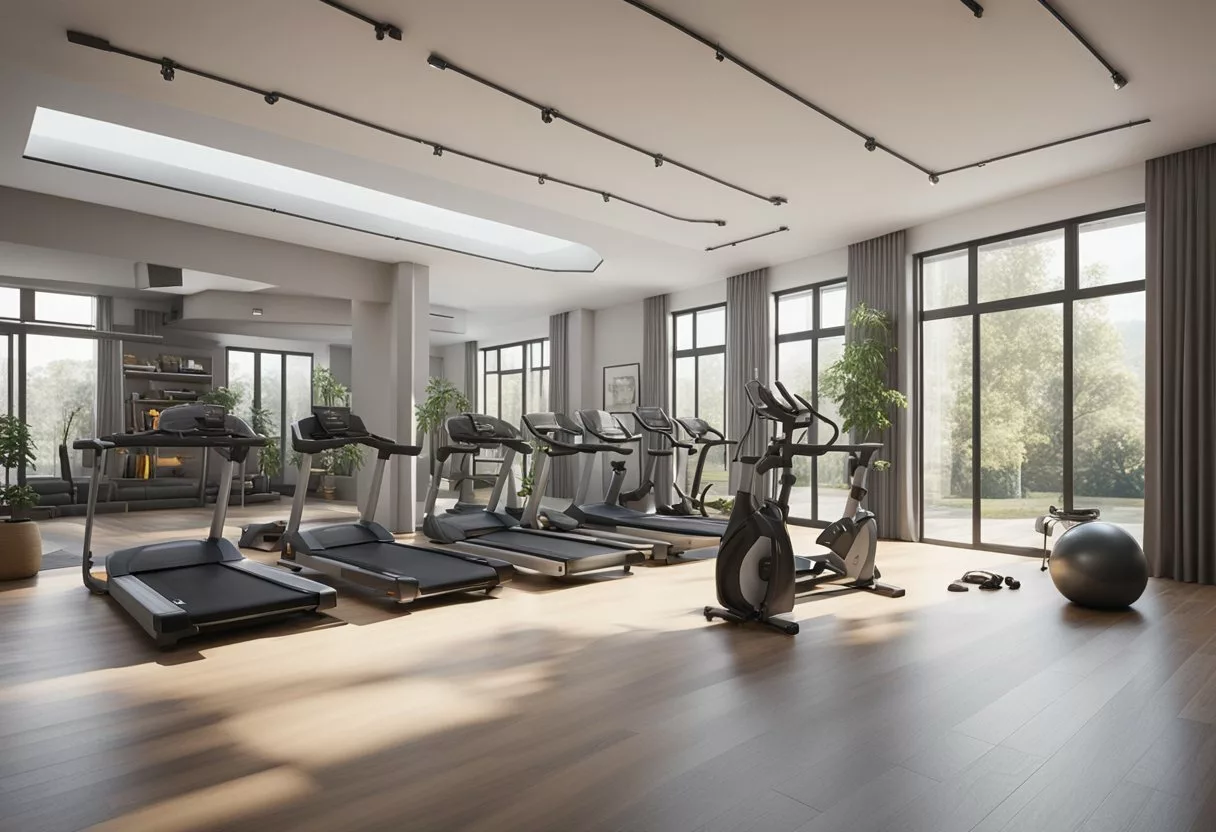
A home gym setup that offers both versatility and high performance often includes various types of equipment to address different fitness needs. Incorporating free weights like dumbbells and kettlebells, paired with resistance tools such as bands and pulleys, can provide a comprehensive workout experience.
Incorporating Dumbbells and Kettlebells
Dumbbells and kettlebells are essential for a versatile home gym. They allow users to perform a range of exercises targeting different muscle groups. Dumbbells can be used for exercises like bicep curls, tricep extensions, and shoulder presses.
Kettlebells are excellent for dynamic movements such as swings, goblet squats, and Turkish get-ups. These movements improve strength, endurance, and coordination.
Having a set of both can help ensure a balanced workout routine. Adjustable dumbbells and kettlebells can save space and provide various weight options without needing multiple sets, making them ideal for small spaces.
Utilizing Resistance Bands and Pulleys
Resistance bands and pulleys can further increase the versatility of a home gym. Resistance bands come in various tension levels, suitable for different strength levels and exercises. They can be used for workouts targeting multiple muscle groups through exercises like banded squats, chest presses, and lateral raises.
Pulleys, such as those found in cable machines, offer a broad range of resistance exercises. They are effective for isolation exercises such as triceps pushdowns and chest flyes, as well as compound movements like rows and pull-downs.
Incorporating these tools can enhance performance by allowing for smooth, controlled movements that target specific muscles, improving strength and flexibility. They also occupy minimal space, making them an excellent choice for home gyms.
Enhancing Your Setup with Advanced Tools
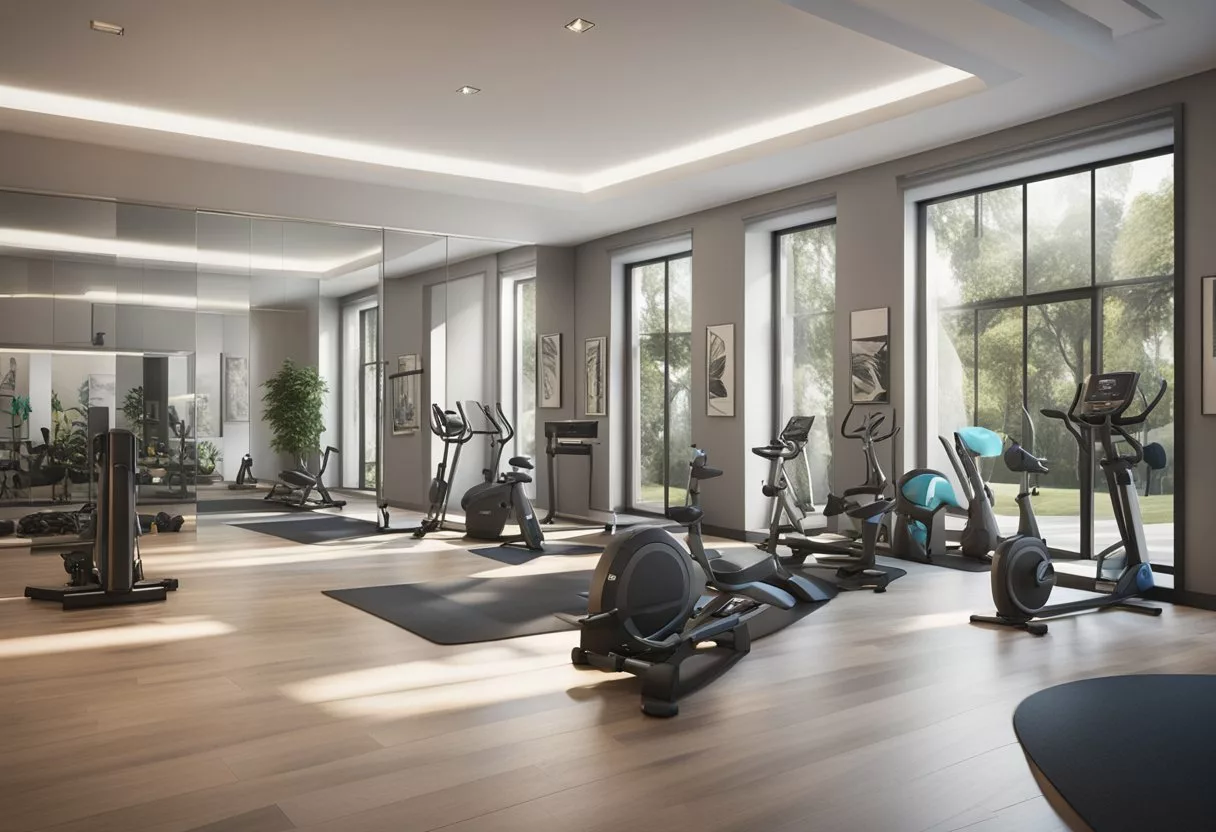
Investing in advanced tools can significantly increase the functionality and efficiency of your home gym. By integrating high-quality cardio machines and selecting specialized equipment, you can target different muscle groups more effectively and diversify your workouts.
Integrating Cardio Machines
Adding cardio machines to your home gym is essential for a well-rounded fitness routine. Popular options include treadmills, ellipticals, and exercise bikes. These machines help improve cardiovascular health and endurance.
A treadmill offers a versatile workout, from walking to high-intensity running. An elliptical is gentler on the joints while still providing a full-body workout. For those who enjoy cycling, a stationary bike is compact and effective.
Many advanced cardio machines now come with interactive screens and heart rate monitors. This allows users to follow guided workouts and track their fitness progress.
Selecting Specialized Machines and Accessories
Incorporating specialized machines can help target specific muscle groups. A cable machine is highly versatile and allows for a wide range of exercises, including rows and lat pulldowns. A leg press machine is ideal for building lower body strength.
A power rack with a pulley system can enhance your ability to perform squats, bench presses, and other strength training exercises. This setup provides safety features, making heavy lifting more secure.
Accessories like resistance bands, adjustable dumbbells, and stability balls also add variety to workouts. These tools are cost-effective and space-saving while offering numerous exercise options.
Cost-Effective Solutions for Every Budget
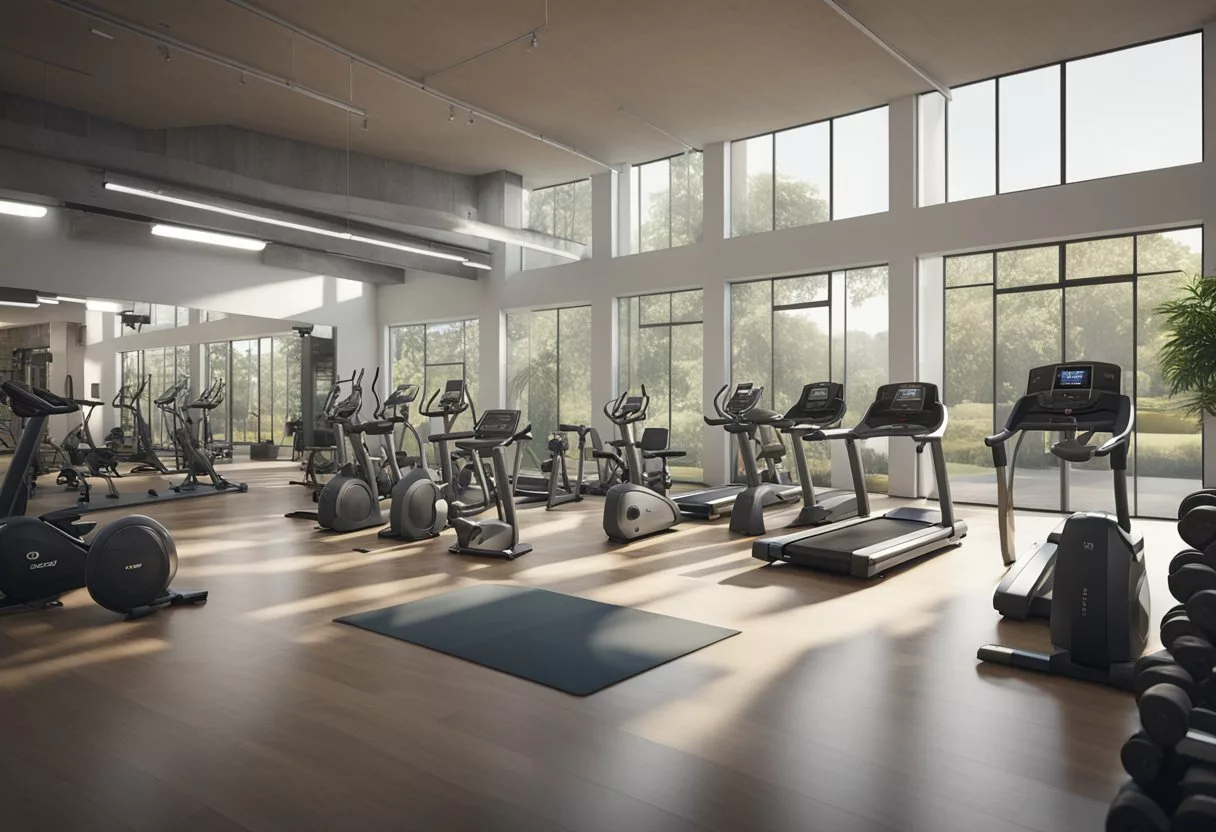
Creating a home gym doesn’t need to break the bank. There are numerous ways to get quality equipment, whether you’re focused on budget options or looking to invest in higher-end gear.
Building a Budget-Friendly Home Gym
For those starting with a limited budget, prioritizing multifunctional and low-cost equipment is key. Dumbbells, resistance bands, and a yoga mat can go a long way. Adjustable dumbbells like the Yes4All Cast Iron Adjustable Dumbbell Set offer versatility and cost efficiency.
Resistance bands are another excellent option, providing full-body workouts for minimal cost. The Insonder Resistance Bands Set is a top pick, available for under $10. Including a budget exercise bike like the Yosuda YB001R Magnetic Exercise Bike can add cardio options without straining your finances.
Investing in High-End Equipment
For those willing to invest more, high-end equipment provides additional features and durability. Treadmills such as the Horizon Fitness T101 offer excellent build quality and advanced features at a reasonable price point. Adjustable dumbbells like the NordicTrack Select-a-Weight provide extensive weight ranges and ease of use.
An all-in-one machine, such as the Force USA G3, consolidates multiple exercises into one device, saving space and providing comprehensive workout options. An elliptical trainer like the Sole E20 adds variety and a low-impact cardio option, making the higher investment worthwhile for a complete home gym setup.
Customizing Home Gym for Specific Training Goals
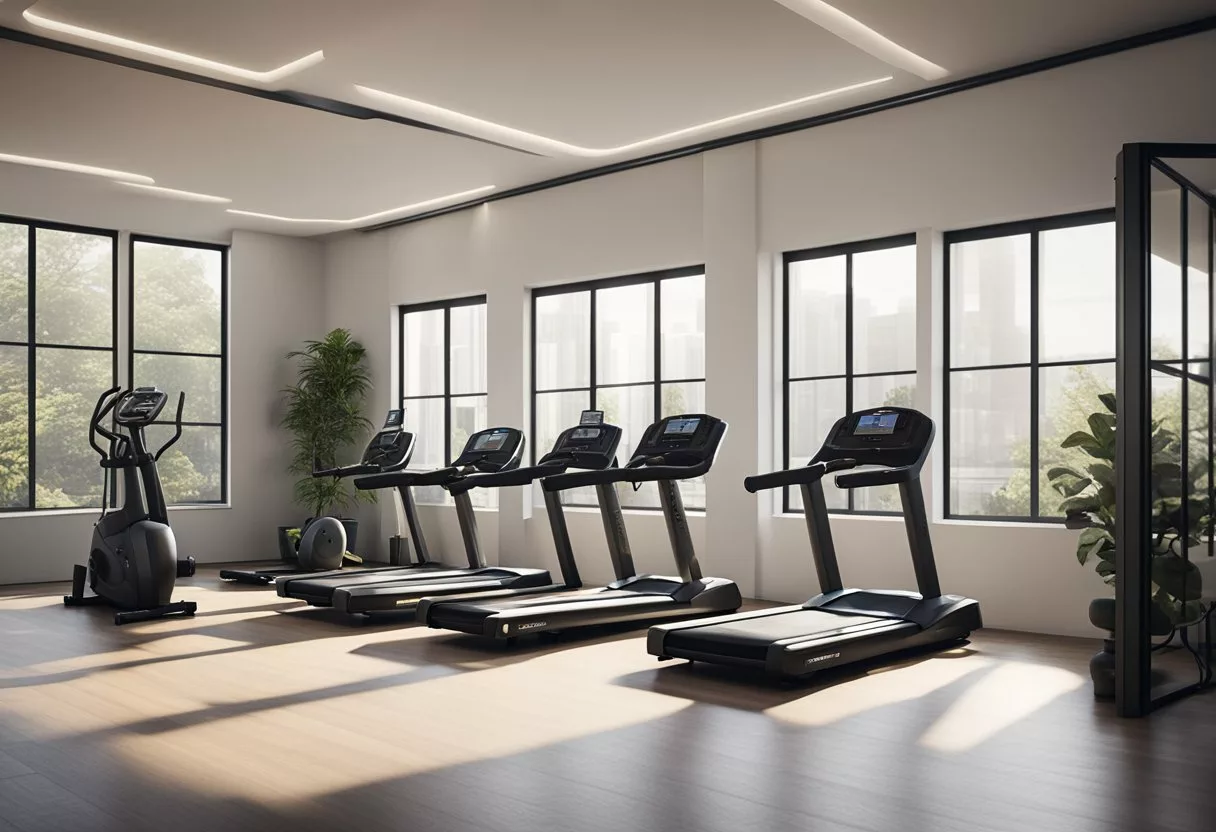
When setting up a home gym, tailoring the equipment and layout to fit specific training goals can make a big difference. Whether you’re a weightlifter, bodybuilder, athlete, or just looking to stay healthy, customizing your gym can help you reach your objectives more effectively.
Tailoring for Weightlifters and Powerlifters
For weightlifters and powerlifters, the focus should be on strength and lifting heavy weights. Key equipment includes:
- Barbells and plates: A high-quality barbell with adjustable weight plates.
- Power rack: Essential for safety and versatility in heavy lifting.
- Bench: A sturdy bench for exercises like bench press.
- Flooring: Rubber mats to protect your floor and equipment.
To enhance performance, they can also add accessories like lifting belts, wrist wraps, and chalk. These help in maintaining proper form and preventing injuries during intense training sessions. Additionally, a good set of resistance bands can provide extra options for mobility and warm-up exercises.
Designing for Bodybuilders and Athletes
For bodybuilders and athletes, the gym should support muscle growth and overall performance. Key equipment includes:
- Dumbbells: A set ranging from light to heavy weights.
- Cable machine: For a variety of isolation exercises.
- Adjustable bench: For different angles in strength and hypertrophy training.
- Leg press machine: To train lower body muscles effectively.
Bodybuilders often emphasize their physique, so having a full-length mirror can help monitor form and progress. In addition, exercise bands and stability balls can be useful for functional training and targeted muscle engagement. A timed interval trainer can also be beneficial for athletic training that focuses on speed and endurance.
Adapting for General Health and Fitness
For those focused on general health and fitness, the gym should be versatile and easy to use. Key equipment includes:
- Cardio machines: Such as a treadmill, stationary bike, or rower.
- Free weights: A set of dumbbells and kettlebells.
- Resistance bands: Excellent for a variety of workouts.
- Yoga mat: Useful for stretching and floor exercises.
Incorporating a variety of workout options keeps the routine interesting and targets different aspects of fitness like strength, flexibility, and cardiovascular health. Additional equipment like a foam roller can help with recovery and reducing muscle soreness.
For a comprehensive setup, including equipment that fits multiple uses is key in maintaining a balanced and flexible workout routine.
Durability, Stability, and Maintenance
Durability, stability, and maintenance are crucial for a home gym setup. High-quality construction ensures equipment lasts longer, while regular upkeep maintains functionality and safety. Let’s dive into key factors you need to consider.
Evaluating Equipment Construction
When selecting home gym equipment, focus on build quality. Look for steel frames, which offer excellent durability and support. Equipment with welded joints rather than bolted ones can enhance stability and reduce wobbling.
Inspect different parts closely. For example, check the quality of cables and pulleys in machines. Opt for those made with high-tensile materials like aircraft-grade cables, which resist wear and tear. Additionally, coatings on metal parts, such as powder coating, prevent rust and corrosion, extending the lifespan.
Pay attention to warranties offered by manufacturers. A longer warranty often indicates confidence in the product’s durability. Websites like Garage Gym Reviews provide detailed reviews on the best home gym machines, highlighting their build quality and stability.
Maintaining Your Home Gym
Regular maintenance keeps equipment functional and safe. Start by cleaning surfaces regularly to remove sweat and dirt. This prevents deterioration and maintains the appearance of your equipment.
Inspect moving parts frequently. Lubricate pivots and hinges using the recommended products to ensure smooth operation. For cardio machines, like treadmills or ellipticals, check the belts and motors periodically. Tighten any loose screws, and replace worn-out parts immediately.
Create a maintenance schedule. Weekly checks might include tightening bolts and wiping down surfaces, while monthly tasks could involve more thorough inspections and deeper cleaning. Utilizing guides such as the Ultimate Home Gym Guide can provide additional tips on keeping your gym in peak condition.
Investing time in maintenance not only extends the life of your equipment but also ensures your workouts remain safe and effective.
Innovative Fitness Technology Integration

Modern home gyms are leveraging cutting-edge technology to provide personalized and interactive workouts. This section will cover AI-powered fitness products and the benefits of integrating smart home gym equipment.
Exploring AI-Powered Fitness Products
AI-powered fitness products are transforming home workouts. One example is the Tonal, a smart strength training machine that uses adaptive resistance. It adjusts weight automatically based on the user’s performance and progress.
Plus, fitness mirrors like the Mirror offer virtual classes and real-time feedback. These mirrors display live trainers who can guide and correct the user’s form.
Another notable AI-integrated equipment includes smart treadmills and rowers. The NordicTrack Commercial 1750 treadmill offers interactive sessions with trainers who can control the machine’s speed and incline remotely.
These tools provide a more engaging and results-driven workout experience.
Benefits of Smart Home Gym Equipment
Smart home gym equipment brings numerous advantages. First, it provides personalized workout plans, which adapt as the user’s fitness level improves. Devices like the Hydrow Wave Rowing Machine offer customized sessions based on performance data.
Second, these machines are space-efficient. Tools like the MaxPro SmartConnect Portable Cable Machine provide a full-body workout without occupying much space.
Third, they enhance convenience by offering on-demand classes. Users can fit workouts into their schedules easily. For example, the ProForm Pro 2000 Treadmill includes a variety of pre-recorded and live sessions.
Incorporating smart equipment in home gyms leads to more effective, adaptable, and convenient fitness routines.
Creating an Effective Workout Environment
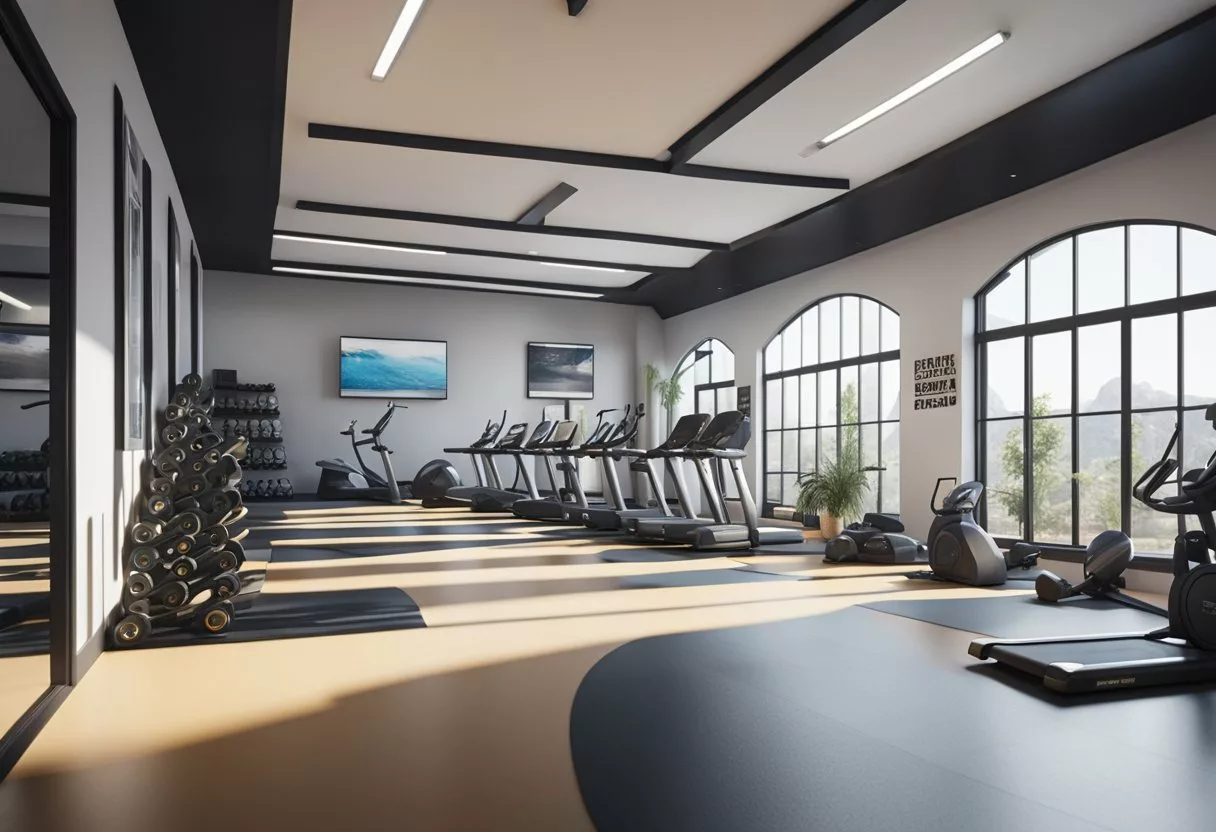
Setting up a home gym goes beyond just the equipment. It’s essential to create a space that enhances focus and motivation while ensuring comfort and safety.
Environment and Atmosphere
The atmosphere in a workout space greatly impacts motivation. Start by choosing a location with plenty of natural light and good ventilation. Natural light can boost energy levels and mood. Incorporate mirrors, which can aid in form correction and create a sense of more space.
Music can be a powerful motivator. Consider installing a sound system or using wireless speakers. Adding personal touches, such as motivational posters or your favorite colors, can make the space uniquely yours and more inviting.
Storage solutions, such as shelves or racks, help keep the area tidy and safe. A clutter-free environment reduces distractions and risk of injury, allowing for a more efficient and enjoyable workout.
Flooring and Soundproofing Solutions
Good flooring is crucial for a home gym. Rubber flooring is highly recommended due to its durability and shock-absorbing qualities. It protects the floor from heavy equipment and provides a non-slip surface, reducing the risk of accidents. Interlocking rubber tiles are easy to install and replace if damaged.
For those concerned about noise, soundproofing is an important consideration. Thick mats or gym flooring can significantly reduce noise levels from dropped weights or vigorous activity. Acoustic panels on walls or ceiling tiles can further help in minimizing noise, ensuring a quieter workout environment.
Soundproofing not only creates a more peaceful workout environment but also ensures that household members are not disturbed, making it an essential component of any effective home gym.
Frequently Asked Questions
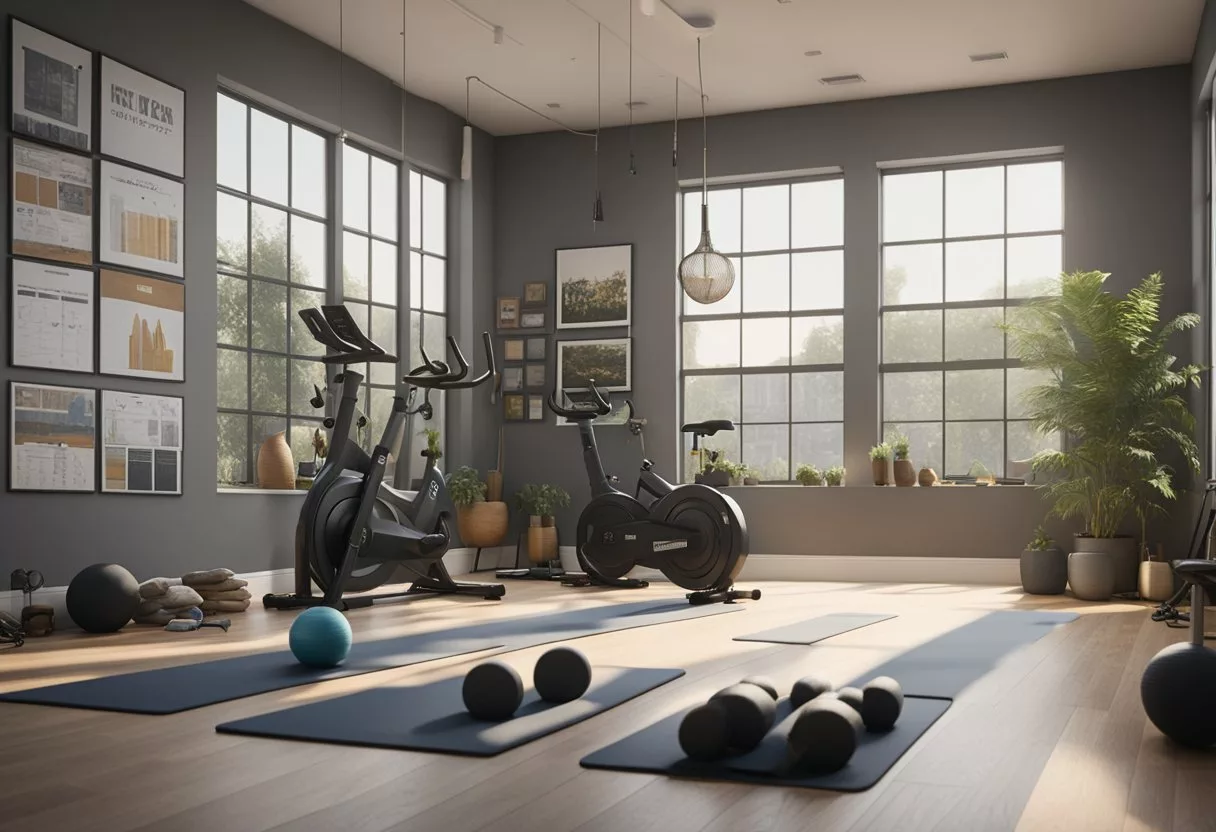
Setting up a home gym can be a rewarding investment. From essential equipment to maximizing small spaces, here are answers to some common questions.
What equipment is essential for creating a basic home gym setup?
Key items include a set of adjustable dumbbells, a resistance band, and a yoga mat. Adding a stability ball and a jump rope can enhance your workout options without requiring much space.
How can I maximize a small space for a home gym?
Use foldable or multi-use equipment like resistance bands and adjustable benches. Utilize vertical space by installing wall-mounted racks or storage. Mirrors can make the space feel larger and improve your workout form.
What are the best investments for a full-body workout machine for home use?
Machines like the Tonal or Bowflex offer diverse exercises in a compact design. These systems often combine strength training and cardio, providing a comprehensive workout.
Is it more cost-effective to build a home gym than to maintain a gym membership?
Building a home gym can be more cost-effective in the long run. While the initial investment might be higher, it eliminates monthly fees and travel costs. Investing in durable, versatile equipment can save money over time.
What home gym equipment can provide the most versatile workouts?
Adjustable dumbbells and resistance bands are among the most versatile. They allow for a wide range of exercises and can be easily stored. A multi-functional bench or a rack system also offers significant versatility.
What should be considered when choosing an all-in-one home gym system?
Consider the range of exercises the system offers and its footprint. Ensure it meets your fitness goals and fits your space. Check for durability and ease of use, and look for systems that combine multiple fitness modalities.